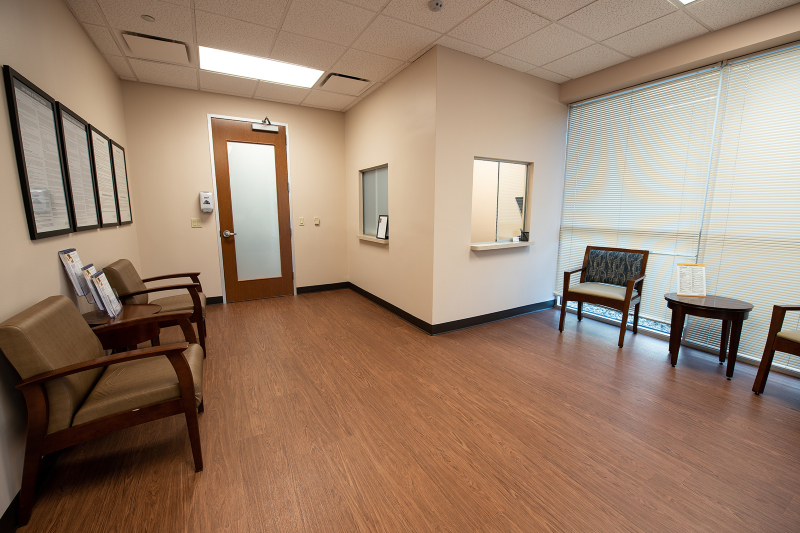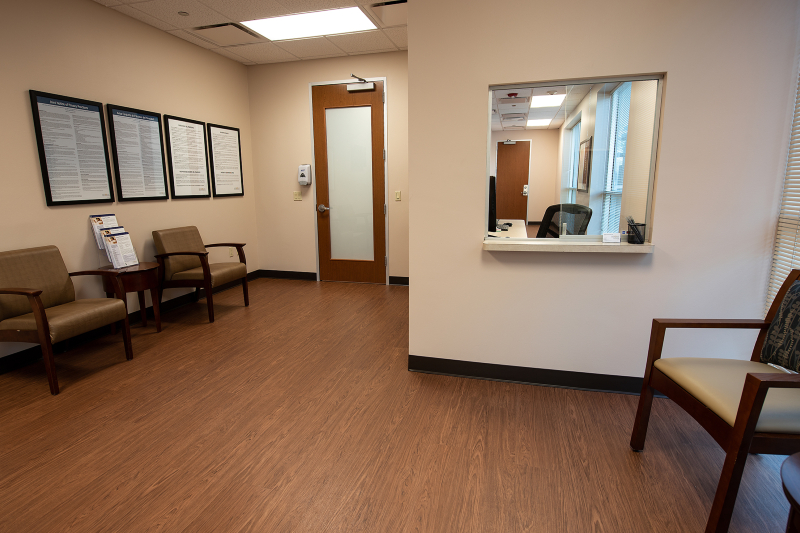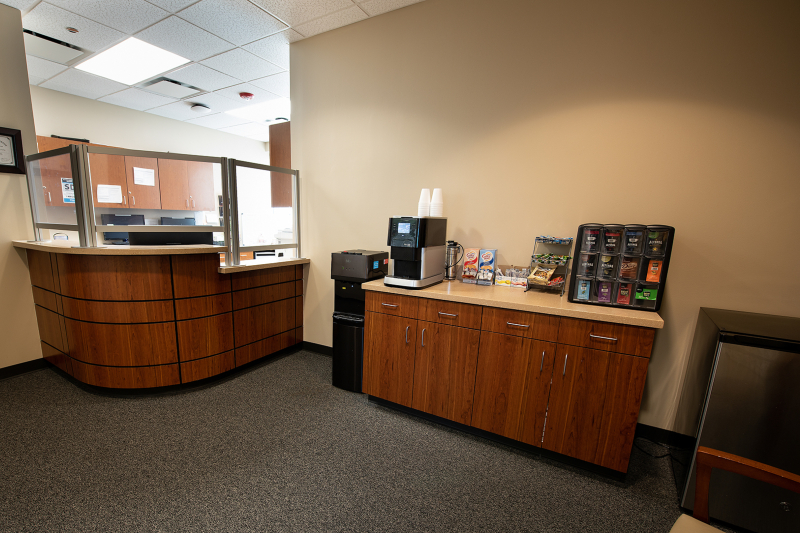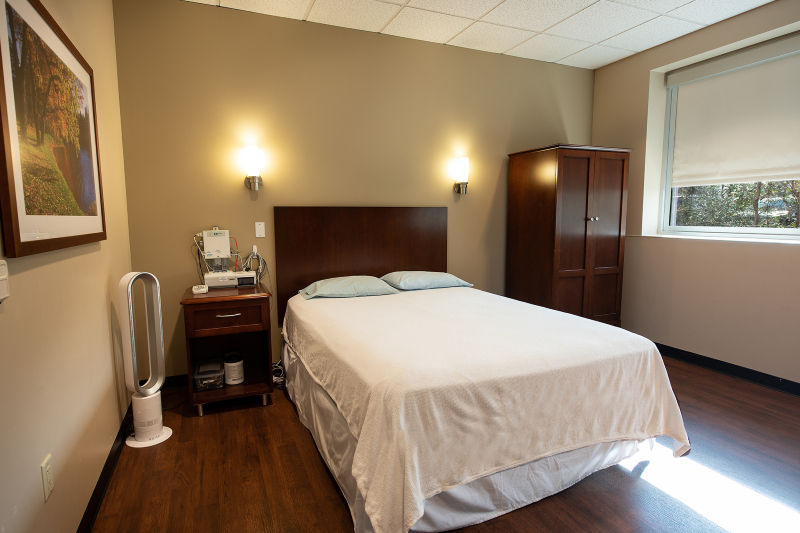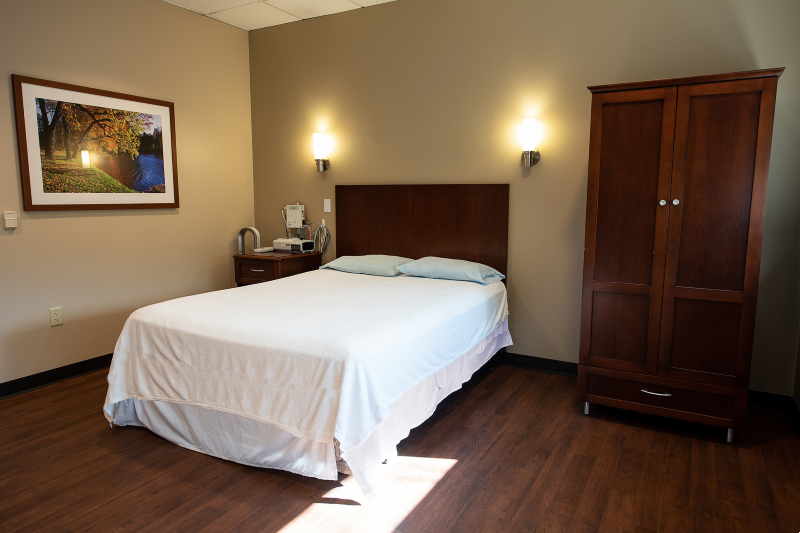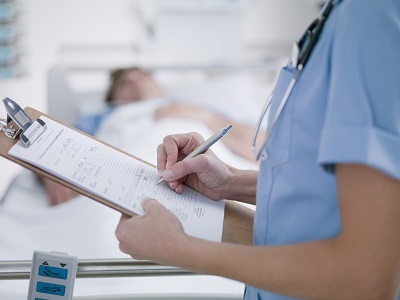
Polysomnography (sleep study) is used to diagnose sleep disorders. Memorial Hermann Sleep Disorders Centers perform different types of sleep studies, based on your specific needs and your physician’s recommendations, to determine the cause of the problem. With an accurate diagnosis, your physician can recommend the best course of treatment, so you can find relief and begin to live a healthier life.
What is a Sleep Study?
A sleep study is an overnight exam that monitors your brain and other parts of your body while you sleep. It measures things like heart rate, breathing rate, snoring, eye movements, muscle movements and oxygen level. Sleep studies record your pattern of sleep and how long you remain in various sleep stages and can identify problems like sleep apnea, insomnia and narcolepsy.
A sleep technician will attach painless sensors to different parts of your head and body that monitor sleep activity. The information is recorded and will be evaluated by your physician for diagnosis and treatment options based on your comprehensive evaluation.
Types of Sleep Studies
Memorial Hermann Sleep Disorders Centers perform a range of both overnight and daytime sleep studies. Your physician will recommend the appropriate test for your specific needs.
Overnight Sleep Studies
Nocturnal Polysomnogram
This test is considered the “gold standard” for diagnosing sleep disorders. Patients arrive at the sleep center in the evening and stay overnight in a hospital-type bed. Sensors are attached to monitor various functions, and the results are reviewed by a physician. A nocturnal polysomnogram may be recommended if you experience any of the following symptoms:
- Excessive daytime sleepiness
- Snoring
- Sleep apnea
- Insomnia
- Morning headaches
- Chronic fatigue
- Parasomnias that include night terrors, nightmares, sleep walking and bed wetting
Nocturnal Polysomnogram with CPAP
This type of study is the standard nocturnal polysomnogram test with the addition of a continuous positive airway pressure (CPAP) machine. It is used to determine the effects of CPAP therapy on obstructive sleep apnea (OSA).
CPAP systems consist of an airflow generator, air tubing and a nasal mask. Air is pushed from the generator, through the tubing and mask and into your nose and throat. The air flows continuously which maintains slight pressure to keep upper airways open. This should allow you to breathe normally and sleep well.
While you sleep, technicians adjust the CPAP settings based on how your body reacts to the air flow and pressure. This helps determine the proper settings for patients to use during CPAP therapy at home.
Nocturnal Polysomnogram with BiPAP
This type of study is the standard nocturnal polysomnogram test with the addition of a bilevel positive airway pressure (BiPAP) machine. It is used for people with obstructive sleep apnea (OSA) who cannot tolerate CPAP therapy and have better results with bilevel therapy.
Bilevel therapy works by delivering two different levels of positive air pressure: a higher level of pressure when you inhale, and a lower level of pressure when you exhale. BiPAP devices can help people with OSA if they have found CPAP therapy too difficult to tolerate.
While you sleep, technicians adjust the BiPAP settings based on how your body reacts to the air flow and pressure. This helps determine the proper settings for patients to use during BiPAP therapy at home.
Split-Night Sleep Study
This type of study includes two different tests: a standard nocturnal polysomnogram is administered first, and if significant OSA is detected, CPAP therapy is added for the second part of the test. By monitoring sleep activity both with and without CPAP therapy, physicians can establish a baseline result and better understand how well the therapy is working.
Home Sleep Test
Patients take home an easy-to-use device and perform a sleep test on their own. Sleep technicians will teach you how to attach the sensors and set up the test. While you sleep, the device records sleep activity that can be evaluated by your physician. Some patients may start with a home test, and depending on the results, an in-lab test may then be recommended.
Learn More About Home Sleep Tests
Daytime Sleep Studies
Multiple Sleep Latency Test (MSLT)
An MSLT is performed to diagnose patients with daytime sleepiness. It is frequently used after a patient receives a normal nocturnal polysomnogram result but continues to experience excessive sleepiness or episodes of falling asleep inappropriately during the day.
This type of test is helpful to diagnose narcolepsy and idiopathic hypersomnolence. Like the nocturnal polysomnogram, painless sensors are attached to the head and body to record brain activity, eye movements, muscle activity and heart activity. During an MSLT, information is evaluated during five 20-minute daytime naps which are scheduled in two-hour intervals throughout the day. The test measures rapid-eye movement (REM) sleep and sleep latency, which is the length of time it takes to enter REM sleep during each nap. Based on the information gathered from the MSLT, the physician may determine the potential source of daytime sleepiness.
Maintenance of Wakefulness Test (MWT)
This daytime sleep study determines how well you can stay awake in a quiet, dark room where it would be easy to fall asleep. Like the nocturnal polysomnogram, painless sensors are attached to the head and body to record brain activity, eye movements, muscle activity and heart activity. The test consists of four blocks of time when you are quiet and still. A technician will record information and make note of how long you stay awake during these blocks of time and when (or if) you fall asleep.
An MWT is often used for patients who are already being treated for a sleep disorder. It can evaluate the effectiveness of current treatment by examining your ability to stay awake during the day and perform daily activities.
What Can a Sleep Study Diagnose?
Sleep studies are used to diagnose sleep disorders, including:
- Sleep apnea
- Insomnia
- Narcolepsy
- Restless leg syndrome
- Sleep-related seizure disorder
- REM sleep behavior disorder
- Sleepwalking
- Sleep talking
Who Needs a Sleep Study?
Long-term sleep deprivation and sleep disorders are connected to an increased risk of diabetes, high blood pressure, obesity, heart attack and depression. If you are suffering from any of these conditions, and your physician believes it may be connected to poor-quality sleep, they may recommend a sleep study.
If you have symptoms such as snoring, excessive daytime sleepiness, fatigue, difficulty focusing or concentrating, or depression, an underlying sleep disorder could be causing or making these problems worse. It is important to speak with your physician about your symptoms.
Pediatric Sleep Studies
The highly skilled specialists at the Pediatric Sleep Disorders Center at Westside provide your child with advanced care and the latest technology to treat sleep-related disturbances.
Schedule a Sleep Study
If you or a loved one show signs of a sleep disorder, the dedicated sleep-medicine specialists at Memorial Hermann can conduct an evaluation. If a sleep study is needed, a physician can provide a referral to one of our Sleep Disorders Centers. For patients with diagnosed sleep disorders, our specialists can create a treatment and monitoring plan tailored to you and will continue to monitor your health throughout the process.
If you have a physician’s referral, please contact one of our Sleep Centers to schedule a sleep study. We have appointments available at locations throughout Greater Houston for your convenience.
